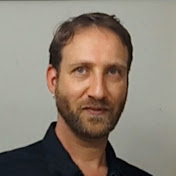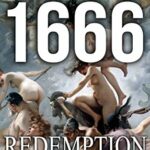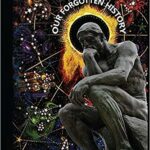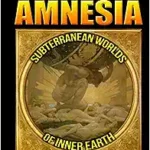

Summary
➡ This text talks about how nature, like plants and seashells, often follows a pattern called the Fibonacci sequence. This pattern helps plants grow leaves in a way that lets them get the most sunlight. The text also discusses sacred geometry, a concept that suggests the universe is designed based on certain mathematical patterns. This idea is seen in art, architecture, and even in our DNA. Lastly, it mentions Leonardo da Vinci’s belief in a divine order that can be understood through math and geometry, and his exploration of different religious and philosophical ideas.
➡ The text discusses the history and significance of the Magi, who were not kings as often depicted in Christmas carols, but rather priests from the Babylonian and Persian religions. The Magi were known for their wisdom and practices, such as astrology and numerology, and their beliefs influenced early Greek philosophy. The text also explores the spread of these beliefs through the conquests of Alexander the Great and the establishment of the city of Alexandria, which became a hub for various occult traditions. These traditions, including Hermeticism, Neoplatonism, and Gnosticism, all trace back to the original teachings of the Magi.
➡ This text talks about Jewish Gnosticism, which is believed to be the root of Jewish Kabbalah and involves a journey through seven heavenly planets, symbolizing a transformation from lead to gold. It also discusses the influence of this tradition on various modern movements and secret societies, like Freemasons and Rosicrucians. The text further explores the idea of ancient wisdom passed down from fallen angels, the legend of Atlantis, and the significance of sacred geometry and alchemy in understanding the universe. Lastly, it mentions the work of notable figures like Nikola Tesla, Galileo, and Pythagoras in relation to these concepts.
Transcript
Many of history’s greatest minds shared a universal secret that allowed for their genius expressions in art, engineering and architecture, an underlying esoteric tradition that spans back through prehistory, which they applied to their modern inventions and theories that centers on number, harmony and cosmology that lies at the very core of mystery school religions evident in temples from ancient Egypt, Babylon, India, Greece and Rome. Architects of the Middle Ages and Renaissance studied the same geometric harmonics and proportions, which they also called music of the spheres, that they applied to their cathedrals and religious architecture.
A roman architect and engineer from the first century that had a great influence on a Renaissance was Marcus Vitruvius, known for his multivolume work titled De Architectura, which he dedicated to his patron, the emperor Augustus, as a guide for building projects. It combines the knowledge and views of many antique writers, praising the ancient greek orders with a focus on the importance of aesthetics and beauty, which I’ll touch on again later.
A notable iconic illustration in the work of Vitruvius is the vitruvian man with his arms and legs apart and inscribed in both a circle and square, a unique synthesis of artistic and scientific ideals, and often considered an archetypal representation of the high renaissance that also inspired one of its greatest minds. Leonardo da Vinci was a Renaissance painter, sculptor, architect, inventor, military engineer and alchemist. The epitome of a true Renaissance man, he was renowned for his diverse talents and innovations, including sketches of several flying machine concepts in his notebooks during the Renaissance period, which have recently been replicated and put on display at the California Science Center Museum, which I recently had the privilege of viewing for myself.
One of da Vinci’s most famous flying machine designs, the ornithopter, was inspired by the flight of birds. It featured a wing flapping mechanism that mimicked bird flight. However, there’s no evidence that da Vinci ever built a working model of this machine. While the replica looks very impressive, I don’t think I’d be willing to test flight. Another interesting model is the aerial screw, which resembles a modern helicopter. It consisted of a screw shaped rotor that, when turned, would allegedly generate, lift and propel the machine upwards.
This one looks more sturdy with an electric motor. I think I’d be willing to give this one a try. Da Vinci sketched several designs for parachutes, which he called tentelli, or little tents. These designs were intended to slow the descent of a person or object from a height, thus influencing later developments of parachuting technology. Resembling a large kite, he understood the principles of lift and drag, and his glider designs incorporated elements to maximize lift and control.
In addition to his flying machines, da Vinci also designed a type of aerial assault vehicle intended for military use. This design resembled a large platform equipped with cannons and manned by soldiers. It was intended to be lifted by hot air or manpower, allowing it to hover over enemy positions and deliver firepower from above. While da Vinci’s flying machine designs were groundbreaking for their time and demonstrated his keen understanding of aerodynamics, materials, and mechanical engineering, none of his designs were successfully built or flown during his lifetime.
However, his work laid the foundation for future developments in aviation and inspired generations of inventors and engineers. That said, he was gifted with a curious mind and brilliant intellect, and diligently studied the laws of science, nature, art, and math, including sacred geometry, which is the belief that certain geometric proportions and shapes hold spiritual significance. In an esoteric context, sacred geometry is not just about intricate patterns and symbols, but the belief in a divine order that governs the very fabric of the universe, the fundamental core structures from which all life emerges.
From the smallest molecule to the vastness of the cosmos, there’s a repeating geometric archetype. But what makes it historically revered as sacred is that these patterns and proportions could allegedly allow a person to tap into spiritual truths and cosmic energies that are often described as magical. Sacred geometry starts with simple shapes. The circle, representing unity and wholeness. The spiral, a symbol of evolution and growth. The triangle, a sign of harmony and ascension.
Concepts like the golden ratio, or fibonacci sequence, further testify to the universe’s inherent order and mathematical beauty. They appear in everything from arrangements of petals in a flower to the wings of an insect. This is the essence of sacred geometry, recognizing the interconnectedness of all things. You close. Dibonacci sequence is a series of numbers that go from one to one, to two, to three, to five, to eight, to 13, to 21, and on and on.
In fact, it’ll continue like that forever. If you’re easily confused by math, don’t worry. This is not that complicated, and it’s very important to know. So let’s walk through this together. This number sequence is very easy to understand. You simply add back the last two numbers. For example, we start with one, the smallest total unit that we can have. There’s nothing before one, so we simply have to duplicate it.
So we get another one. But the next time we perform this process, we get one and one, which makes two. To perform this process again, you’ll have to add two and one to produce three, then two and three to produce five and three and five to make eight and eight. And five to make 13. And so on until infinity. Nature itself uses this extraordinary simple number sequence to construct so many of our forms, everything from galaxies to sunflowers.
And now I’m going to show you how this number sequence translates into actual physical geometry. If you’re just starting out, it’s best to begin with a surface, like a graph paper, meaning that it’s easiest if you draw on something that has evenly and symmetrically placed square units of measurement that are all of the same size. To make it simple, we’ll have one of these units represent one, and we’ll trace it out in red.
Then we need another one unit. So we’ll draw that one next to the first one. And then directly below them, we can draw a line connecting both of the two squares that we just made. We can duplicate that line three or more times and produce a perfect square. Then we can duplicate that process as many times as we like or as many times as the canvas that we’re using will allow.
And as you can see, the five square is five units by five units. The eight square is eight units by eight units, and so on. Now we can finally add the special spiral. There are various ways that this can be achieved, but I will demonstrate the method that seems to most closely resemble nature. This method allows you to use circles to construct the spiral. First, draw a perfect cross with each arm, the exact length of the square that you’re working in.
The center of this cross should be placed furthest from where the spiral will end up being. Now all you got to do is draw a perfect circle, which, by virtue of its size and positioning, is cut into four equal pieces by the cross. This means that the square that you’re working on should take up one quarter of the circle that you’re using to produce a spiral within it.
Now all we got to do is erase the other three quarters that we don’t need. But in this case, either side is the same. So we can simply add back one quarter. Now all we got to do is repeat this process again and again until all of the zero curvature scaffolding for the Fibonacci spiral is filled. As you can see, in its completed form, it very closely matches the twisting motion of a galaxy.
You may have heard of it either in school or in pop culture. Is the Fibonacci sequence okay, you heard of it? I’ll give you the first two numbers in the Fibonacci sequence. It’s a one and a one. All right. And how you get the next numbers is by adding the previous two. Okay, so what do you think the next number is? Two. Two. Right. And then if I add the next two.
Just the next two. Just two. We get three. And then five. Do five. Eight. And it gets a little harder now, Chris. Oh, my gosh. 1313. Yes. And then 21. 21. Excellent. So this is the Fibonacci sequence. You probably learned it at some point in, like, algebra two, way back when, and you said it just enough to get through the test, and then you forgot about it. And then you forgot about it.
That’s okay, though. That’s why you’re here. And I’ve always heard that these numbers relate to spirals. I don’t know if you’ve ever heard this before. I have not heard this part. I’ve always heard that these relate to spirals. And so I was kind of around the grocery store counting spirals on things that I found. Okay. And what I noticed is I have this pineapple here, and if you can see, it has two sets of spirals, one going down to the audience right.
Okay. And then another set going down to the audience left. Okay. And this pineapple has eight spirals going down to the left and 13 going down to the right. Can I just take your word for it? You can take my word. I don’t have count. Don’t worry. I was there. I counted multiple pineapples, but this kind of happens all over. So I have an artichoke here, and it also has five going down one direction and then eight going the other direction.
So it’s still a different part of our fibonacci sequence, but still part of. And then you can find this everywhere. Like, there’s, like, horn fruit, and then the flowers you have next to you. If you look real closely, even the seeds at the tip of those flowers have spirals. Like a similar structure? Yes. They have a similar fibonacci sequence of spirals that are going around the seeds. So, I don’t know.
Check with sunflower seeds. A lot of plants seem to utilize this, even seashells. And I’ve always wondered, why is this happening? You’re going to explain. I’m going to try to. Okay. I’m going to try to. So if we can get, like, maybe a top down view here. Sure. This is going to be my marist stem of a plant. Okay. And the maristem is where all the leaves come off of.
So let’s imagine that one leaf came off my maristem. Okay. Now, where do you think the next leaf should grow? Probably on the opposing side. That makes a lot of sense. Right, because we want to maximize the amount of sunlight we’re getting. Right. So I’m going to want to put a leaf on the opposite side, and let’s see if I can’t. Yeah, perfect. But here’s the other question.
If I did it 180 degrees, then the next leaf has got to be 180 degrees. And then what am I doing? You’re covering it up again. I’m covering it up. That probably doesn’t make sense in nature, does it? Doesn’t make sense. So then the next thing is, well, what if I did 120 degrees? What if we did one here? Maybe you put one like a third of the way, Chris.
Okay. And I’ll put one over here. And then we run into the same problem again, though. Right? Right. I’m then covering the next layer of leaves. So, three dimensionally, this kind of looks like I have kind of a fake plant. I can show you three dimensionally. This kind of looks like this, where the previous leaves are covering the ones below it. Okay. And plants don’t want to grow this way, right? No, because then they’re just, like, shading all of their own leaves.
And so what the Fibonacci sequence gives us is the perfect angle to work with. And it’s a little complicated math. Okay. But if you take some ratios between these different fibonacci and you convert it to angle, you get 137 and a half degrees. Okay. You might have to trust me on this. I’m going to trust you on this. Trust me on this. But what I’m going to go ahead and do is we’re going to measure out 137 and a half degrees from each leaf, and it’ll kind of start to make sense.
So if I put one leaf down, okay, and then I’m going to give you the next leaf to put down. Measure out. I’m going to measure out 137 and a half degrees. So put it down. So at the very center of it’s right. Got there. Right on the line. Right on the line. We’ll do the next one here. All right, go ahead and put that one right there.
And then it looks kind of uneven at this point. It does. But we’re going to keep adding leaves. We’re going to keep adding leaves. Okay. All right. And then I’ll do it from that one. We’ll kind of straighten it out a little. Wait a minute here. And notice how they’re not overlapping over one another, even though it seems kind of random. I’ll give you another leaf, Chris. Here, take this whole pile of leaves.
Okay. I made all kinds of leaves for you. We’ll have the next one right over there. And it’s filling that gap, like, just perfectly. And there is a small amount of overlappage, but the plant is trying to minimize the amount of overlapping. So we couldn’t do this before just by trying to randomly place them down. But any even number wasn’t going to work. You needed this kind of irrational number that the Fibonacci sequence is.
And so even if we’ll put one more down, and you can see that we have a very nicely even distributed. And if I kept doing this, if we did this with, like, a thousand leaves, you’d end up getting a spiral. And if you counted the number of leaves in each one of those spirals, you’d get the Fibonacci sequence. Isn’t that such as this there? Exactly. There we go.
Makes sense. Now, Jeff, I think that that’s a really cool way to kind of incorporate math into science and that we can talk about how plants, while they don’t think and feel like we do, they are still using some of these laws of math. And this is what Leonardo da Vinci’s scientific investigations also led him to explore, the underlying patterns and principles governing the universe. Believing in the existence of a divine order or harmony that could be understood through mathematics and sacred geometry, which he regarded as the universal design language of the cosmos.
An ancient science that explores and explains the energy patterns that create and unify all things. Sacred geometry reveals the precise way that energy of creation organizes itself. This mathematical framework is found in art, architecture, and even in the very design of life itself, including our DNA. Far from being the exclusive realm of academics or mystics, sacred geometry is everywhere, serving as the bridge between the analytical and the intuitive, between science and spirituality.
At the heart of sacred geometry lies the seed of life, a design made up of seven intertwined circles. At first glance, it’s a simple, symmetrical pattern, but its implications run deep. Often incorporated into spiritual architecture, such as cathedrals, temples, and mosques. The seed of life speaks to the fundamental structures of life and existence. Each overlapping circle can be seen as a cell, a cycle, or even a day, culminating in the interconnected nature of life’s processes, often associated with notions of rebirth, fertility, and the spark of new life, demonstrating how life and patterns expand and evolve.
Which brings us to the flower of life. Often depicted as a series of 19 interlocking circles enveloped by a larger encompassing circle revered by ancient civilizations, the flower of life is believed to be the cosmic blueprint encoding the very design of every atomic structure. Life form and essentially all known existence. As modern science ventures deeper into quantum realms, it finds echoes of these ancient geometric patterns, reinforcing their significance as foundational designs of the universe, which speaks to a lost spiritual science of life once known and forgotten.
Of course, this spiritual life force has traditionally always been symbolized as light, with no greater representation of esoteric luminescence than the sun. Rather than restricting oneself to one particular school of faith, Leonardo believed in uniting all knowledge, understanding that there are echoes of universal truths or spiritual light that have been passed down since antiquity via mystery schools encoded in all religions. That said, while considering the relationship of the twelve apostles to the twelve signs of the zodiac, what Leonardo’s last supper implies is written in one of his notes.
880 quote but I only wish I had words to serve me to blame those who are feign to extol the worship of men more than that of the sun. For in the whole universe there is nowhere to be seen a body of greater magnitude and power than the sun. Its light gives light to all celestial bodies which are distributed throughout the universe, and from it descends all vital force for the heat that is in living beings comes from the soul.
And there’s no other center of heat and light in the universe, as will be shown in book four. And certainly those who have chosen to worship men as gods as drove Saturn, Mars and the like, have fallen into the gravest error, seeing that even if a man were as large as our earth, he would look no bigger than a little star which appears but as a speck in the universe, and seeing again that these men are mortal and putrid and corrupt in their tombstone.
While most historians have deemed da Vinci as Catholic, there’s not much firsthand information about his religious inclination. Though he referred to God as a kind of supreme being. Some have described Leonardo as a spiritual alchemist who was not only interested in greek philosophy, but in the mythraic mysticism that influenced Plato and Aristotle. That not only gave rise to philosophy, but also pre christian gnosticism, hermeticism, Sufism, alchemy and Kabbalah, which according to mystery schools and secret societies that are the custodians of these esoteric traditions, can be traced back to the ancient Aryan magi.
The Israelites were divided in two kingdoms. You had the kingdom of Israel in the north and the kingdom of Judah in the south. So the Syrians were the first to come in the early seven hundred s, and they took the entire people of the northern kingdom of Israel into captivity, and they dispersed them into the land of the Medes. And that’s where these ten tribes then became lost of the remaining king of Judah.
They were finally conquered by the Babylonians. And I think the year was 596 BC and the majority of the population was then brought to BAbylon. And so this is the key of where this story begins of the Magi. Let’s just make it clear. We have all these Christmas carols and things about the three kings. Actually, there’s no kings mentioned in the New Testament. The kings are talked or the three kings are the three wise men.
I think it’s just nice to make clear who these Magi are, that they’re not actually there as kings in the Bible. Maybe you could start, David, by making out, describing what you think they were. What does a Magi mean? So this is the whole point and this is whole basis of occult history. So the funny thing is that they are not really discussed in mainstream history. So I’m going to read to you two paragraphs from Albert Pike’s morals and dogma that was published and I’m not sure, maybe the 1850s, approximately middle of the 18th century, to show you how this occult version, this occult interpretation or understanding of the magi is fundamental to the history of Freemasonry in particular and the occult in general.
So he says, to quote the occult science of the ancient magi was concealed under the shadows of the ancient mysteries. It was imperfectly revealed or rather disfigured by the Gnostics. It is guessed at under the obscurities that cover the pretended crimes of the Templars. And it is found enveloped in enigmas that seem impenetrable. The rites of the highest masonry. Magism was the science of Abraham and Orpheus, of Confucius, of Zoraster.
It was the dogmas of this science that were engraving on the tables of stone by Enoch and Mesristus. Moses purified and revealed them, for that is the meaning of the term reveal. He covered them with a new veil when he made the holy Kabbalah. The exclusive heritage of the people of Israel and the inviolable secrets of its priests. The mysteries of thieves and preserved among the nations, some symbols of it already altered.
And the mysterious key whereof was lost among the instruments of an ever growing superstition. Jerusalem, the murderous of her prophets and so often prostituted to the false gods of the Syrians and Babylonians, had at length its turn lost the holy word when a prophet announced by the magi, by the consecrated star of initiation, which is Sirius, came to rendisunder the worn veil of the old temple in order to give the church a new tissue of legends and symbols that still and ever concealed from the profane and ever preserves to the elect the same truths.
So the key with the magi is that they were babylonian priesthood. And so conventionally, it’s understood to refer to the priests of the persian religion of Zoroastrianism. There was also, at the same time, another cult priesthood that were known as Chaldeans, and this was the babylonian priesthood. So again, there’s so much focus on greek history and so little the birthplace of so much of this tradition that this history escapes most people.
So the chaldean magi, as they were called, were famous throughout the world as a sort of wise men. First of all, you have to start with this notion that the magi were priests of the religion of Zoroaster, what’s called Zoroastrianism. It’s a persian religion. The magi that became famous throughout the world practiced a number of doctrines and beliefs that had nothing to do with orthodox Zoroastrianism. These magi, the ones who became popular because our word magic comes from magi.
So fundamentally, what you see is that they will worship some kind of dying God. In their case, it was Mithras, or mithra, which is basically the persian version of Baal and version of the goddess, I think her name was Anahita, which is the origin of Athena. And they would have practiced belief in astrology, numerology. They believed in reincarnation and vegetarianism. So now, again, back to Greece. So this is where it’s important, is that in Greece, we already have sort of a bedrock of this dying God tradition that was existing there through the survival of various.
The worship of DionySus and various other versions. So what happens is that in the year, I think it’s 538, Cyrus conquers Babylon from the BAbylonians, and he releases the Jews from captivity. What happens at this point is that the majority of them are allowed to return to Israel and to rebuild the tEmple, but they don’t all return there. Some of them go to Egypt and some of them end up in Greece, because what’s important here is that the persian empire conquered the entire area of what is today Turkey and so on.
The very westernmost part of Turkey was a region called a greek speaking region called Ionia. And it’s well known that the first beginnings of greek philosophy began there. And again, what historians don’t tell you is that those philosophers emerge under persian occupation. Even those are referred to as Greek. And so if you look at what they call the presocratics, the earliest greek philosophers, their ideas all hold elements that are similar to the magian cult.
And in particular, you can read Heraclitus. And he says what’s very interesting, he gives one of the most damning pieces of evidence, and this comes from the fifth century BC. He says that the cult of Dionysus was borrowed from the magi, and that’s an infernal cult dedicated to the Phallus. So the cult of Dionysus was key because it was the earliest form of the ancient mysteries in ancient Greece.
So again, this was the same dying God ritual that involved intoxication, dancing and orgies and human sacrifice. So from the cult of Dionysus, you get the cult of Orpheus. What you have is you have this archaic, more ancient religious tradition in Greece, which was dedicated to the worship of Dionysus and these other gods, which now gets supplanted by this new cult, especially the cult of Dionysus, but also the advent of greek philosophy.
And so that has been taken in our time by enlightenment philosophers to suggest that the Greeks, because the Enlightenment was the so called age of reason. So they were trying to see history as an evolution of reason, which is why they suggested that the Greeks were rejecting religion in favor of reason and they were abandoning superstition in favor of empirical thought. The reality is that the greek philosophers were actually adopting a new religion, and that religion was the magin cult.
And that’s why when you look at the fundamental teachings of the earliest philosophers, particularly Pythagoras and Plato, you can see that it was derived from magin teachings. And this is the way that they were viewed ever since. And this is why, throughout history, Plato has always been viewed as one of the major founding figures of the Kabbalah, by jewish Kabbalahs as well. And this is why now you can see why Albert pike will claim this heritage for the magi.
This magian cult is basically early jewish kabbalists who were, because the world at the time did not know who Jews were, so they basically confused them as Persians or Babylonians. And so this cult then spread more and more, especially with greek influence. When Alexander the Great conquered much of the world, that’s when this greek version of the Kabbalah then was infiltrated to various parts of the world, most importantly the city of Alexandria.
And this really, Alexandria is really effectively what we can regard as the beginnings of the occult tradition, because this is where now you have this whole confluence of all these different versions. So now you have, in Alexandria, you have the influence of the Persian occult tradition, the Egyptian occult tradition, which is known as hermeticism. You have the influence of the various ancient mysteries. So the mysteries of Mithras, the mysteries of Sybil, the mysteries of vices, the mysteries of Osiris, were all basically just variations of the ancient dying God mysteries.
And then you have the influence of jewish mysticism, which is evidenced in groups like the Essenes and another group affiliated with them in Egypt, and Alexander in particular, called therapeutic. And then you have the greek influence, which is called neoplatonism, and that’s how it enters the fold. And then you have Gnosticism. Gnosticism is basically the christian version of all these various cults. But the thing is that scholars refer to this era as an era of syncretism, because there are so many what they thought were separate elements cross pollinating each other without understanding that they all had a single origin in the cult of the magi.
And they were just basically branches of the same cult. So hermeticism was the alchemical, sort of practical magic branch of this occultism. Neoplatonism was the theology, and the ancient mysteries were the rituals. The one belief that holds all of these, that’s shared with all of the groups in the syncretism in Alexandria. So between neoplatonism, hermeticism, and gnosticism is the belief, what in the deduced version was called Merkaba mysticism, and Merkaba’s mysticism, which is what Gershom Shalom called jewish Gnosticism.
And he characterized as the origin of the jewish Kabbalah. So the fundamental belief is that there are seven heavenly planets, or seven heavenly gods associated with each of the planets and each associated with the metal. So you have sort of like a spectrum from the sun to Saturn, and Saturn is lead and the sun is gold. And so it’s kind of an alchemical process where the mystic has to proceed through the seven planets.
So you proceed through the seven planets. So basically transforming yourself from lead to gold when you reach. Because the sun is the gold is symbolized by the sun, and then that’s where you have union with the sun. Why does this matter today still? Why it matters today is because when we talked about the Illuminati, I just read you the quote from Albert pike. He explains that the so called heritage of the magi is the rights of the highest Freemasonry.
Because what’s that referring to is the development of the cult of the magi is, in actuality, the development of the jewish kabbalah. It’s the birth of this particular tradition of magic, which manifested itself in Judaism as Kabbalah and again manifested itself in Greece as philosophy. So when you look at the birth of this cult, this is it. Everything that you can describe from that point forward is derived from there.
So tracing backwards, you have modern movements, like the new age movement that stemmed out of the theosophical movement founded by Eleanor Blabatsky at the turn of the century. There’s other. I also mentioned the Martinists. These are all groups that emerged out of the early 18th century, as did Freemasons. The Freemasons themselves originated with the Rosicrucians. The Rosicrucians, like the Freemasons, in many ways traced their descent to the Templars.
And the legend of the Templars is that basically they preserved a hermetic tradition or tradition of hermeticism, which is supposed to be ancient egyptian mystical tradition that survived since the early years of the first millennium. So that’s basically a combination of hermeticism, of astrology, of Gnosticism, and I guess you could consider some influences, Sufism, that’s all sort of cross influenced each other to contribute to the western esoteric tradition.
Well, basically the idea is that because the Bible talks about the sons of God. So before the flood, the sons of God came and basically interbred with the daughters of men and created, or the Elohim is what they’re referred to in the Bible. And so it’s translated in English as the sons of God. And they produce a race called the Anakim. And so the Anakim were responsible for all kinds of violence and corruption on the earth, which led to God commanding the flood.
Modern interpretations of this have taken that to refer to the creation of the aryan race on Atlantis and the fallen angels. These fallen angels apparently not only interbred with human beings, but that’s where they learned what was later called the ancient wisdom. So they caught them all kinds of forms of magic. Okay, so what you’re implying here is that these guys survived the flood. This is the story to account of how the occult tradition was introduced to humanity, to attribute it ultimately to the fallen angels.
Atlantis was found not only in greek and egyptian writings, but also in Sanskrit writings before Plato was born. Herodotus referred to the sea of Atlantis, and the ancient Vedic Aryans of India referred to the sunken island, or sunken city, also called White Island. Variations exist among the Berber tribes near Mount Atlas in North Africa who knew of the ancient city called Atala, the Mesoamerican, Maya and Aztec. Remember the fall of Azatlan and the basque people hold the legend of Atlantica, the sunken island sometimes referred to as the Green Isle, from which the basque ancestors allegedly arrived onto Europe.
According to many esoteric and occult authors, from this collapsed civilization arose the pyramids that are found across the globe, including places like China, where hundreds of massive pyramids litter the landscape that rivaled those in Egypt. The mathematical properties of the pyramid at Giza has triggered much debate, as it clearly demonstrates PI, which is problematic to mainstream anthropologists, who credit the Greeks with this discovery 2000 years later. The great pyramid also demonstrates the equilateral circumference and polar radius of the earth, as well as the golden ratio, or relationship between two numbers that are next to each other on the Fibonacci sequence, which is also present in the human body itself.
Which brings us full circle to da Vinci’s vitruvian man, drawn in 1490, which was inspired, as I said, by Vitruvius, who was an alchemist and wrote extensively about the golden ratio that shows up in the human body. For example, look at the one to 1. 6 ratio of the human arm. The divisions from the shoulder to the elbow and the elbow to the end of the tips of the finger is a perfect one to 1.
6. Breaking it down even further, the divisions from the elbow to the wrist and the wrist to the tips of the fingers is also a perfect one to 1. 6 ratio. And this continues on into the hand and even into the fingers. In fact, the entire human body obeys the Fibonacci sequence, which speaks to a hidden code or design, an archetypal blueprint that permeates all life and the universe, which is the basis of alchemy.
In alchemy, sacred geometry is often used to represent the principles of transmutation and the unity of elements often used in the design of alchemical laboratories and equipment. The esoteric traditions of alchemy, however, did not involve transmuting base metals into gold, but used the metaphor of converting lead into spiritual gold, which eastern philosophies refer to as qi, qi, or prana, and germanic secret societies called vril. This universal life force, energy is thought to permeate the cosmos and was sometimes regarded as the fifth element, or ether, and believed to be abundant in places of natural and aesthetic beauty, such as wellmanicured gardens and parks, that, in a practical context, can be thought of as bioelectromagnetic energy.
Mystery schools develop methods of harnessing, amplifying, and storing this divine etheric fluid from a raw, carnal lust into a refined creative force that manifests as profound music, ingenious inventions, masterful art, or practical solutions in engineering, architecture, or chemistry. The divine alchemy of sacred geometry was known to Nikola Tesla, who said, if you want to find the secrets of the universe, think in terms of energy, frequency and vibration.
And to Galileo, who wrote, mathematics is the language with which God wrote the universe, not to mention Pythagoras, who said, all is number. The concept of the great architect of the universe is fundamental in Freemasonry and also incurs agnosticism, which regards the building of the temple in symbolic and spiritual terms, meaning the soul. But the reverence for a divine pattern in nature, mirrored in the human soul predates the christian gnostics stretching back into prehistory and according to the mythraic mystery schools of the ancient Aryans themselves was passed down from anti diluvian times, which the priests of Sias called Atlantis, as faithfully documented in the work of Plato and passed down by the philosophers of our modern era.
My name is Robert Sepper. I’m an anthropologist. My published work is available on Amazon and through all other major book outlets. If you’d like to support my work, you can do that through. There should be a link in the description. Please subscribe for future updates. Leave your thoughts below. Have a wonderful weekend and I hope to see you again soon. It. .









